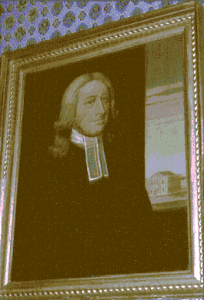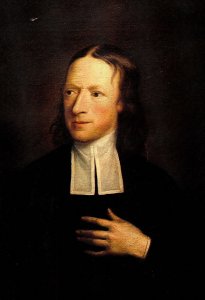Methodism
Originally a simple revival movement aimed at bringing the Church of England back in line with the Protestant Reformation, Methodism did not become a distinct denomination until after the death of its founder, John Wesley, in 1791. However, it distinguished itself from the established church by its doctrine, its organization and its own particular cultural life.
Rejecting the rigid framework of the parishes, little adapted to urban growth, Methodists began preaching at first in the open air. It is in the region of Bristol, then Bath, that John Wesley inaugurated this new form of preaching, which was quickly perceived by his contemporaries as subversive, as early as the month of April, 1739. According to his journal, he immediately assembled a crowd of a thousand to two thousand people.
John Wesley

- Wesley, John (1703-1791)
- By permision of the Trustees of Wesley’s Chapel, City Road, London
[click on the picture to enlarge it]
The life of John Wesley, the founder of Methodism, spans almost the whole 18th century.
John Wesley by Thomas Horsley with the new London chapel in background (inaugurated in 1778).
In London, Wesley often preached in open air, like other Methodists such as Whitefield.
Methodist doctrine
Contrary to the latitudinarism that prevailed in the Church of England, Methodist discourse announced to the crowd the good news of salvation through faith, attainable by any human being prepared to receive the individual revelation of the absolution of his or her sins.
This emotive type of preaching, which made each member of the congregation pass from the deepest despair when he discovered the extent of his sins, to ecstatic joy resulting from the guarantee of personal salvation, was often accompanied, in the first decades, by spectacular epileptiform reactions. People who had accepted to lend Wesley land for his preaching often complained consequently about the disorder it caused. For this reason, he had to change places at least three times during his first nine sermons in Bath (1739).


